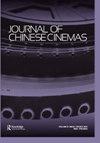Chinese moving image arts, 2015–2017: Observations and reflections
IF 0.4
3区 艺术学
0 FILM, RADIO, TELEVISION
引用次数: 0
Abstract
Abstract Since 2000, moving image art (yingxiang yishu) has gradually become a common term in the field of Chinese contemporary art. “Moving image art” remains an unstable category instructive of the tension and paradox between different forms and content in discursive practices. Mapping key conferences, publications, institutions and exhibitions, this article examines how the idea of “moving image art” arose, circulated, and acquired legitimacy in different Chinese-speaking areas. Rather than conjuring up moving image arts as yet another autonomous subject of art history, this article understands moving image art as a phenomenon resulted from complex processes of negotiation between the local, the trans-regional and the global, as well as conscious social, technological and cultural realities. From 2015 to 2017, there has been a surge of historical survey exhibition on moving image art in major museums in mainland China, Hong Kong and Taiwan, albeit with very different agendas. Rather than providing a linear story of the development of moving image arts, this article takes as its departure point important conferences, exhibitions, institutions that appeared from 2015 to 2017, with the aim to unravel complementing and sometimes competing historiographic attempts.中国动态影像艺术2015-2017:观察与思考
摘要自2000年以来,运动影像艺术逐渐成为中国当代艺术领域的一个常见术语。“运动影像艺术”仍然是一个不稳定的范畴,它反映了话语实践中不同形式和内容之间的张力和悖论。本文通过对主要会议、出版物、机构和展览的映射,考察了“移动图像艺术”的概念是如何在不同的汉语地区产生、传播和获得合法性的。本文并没有把运动图像艺术想象成艺术史上的另一个自主主题,而是将运动图像艺术理解为一种现象,它是由地方、跨地区和全球之间复杂的谈判过程以及有意识的社会、技术和文化现实所产生的。从2015年到2017年,中国大陆、香港和台湾的主要博物馆举办了大量关于移动图像艺术的历史调查展览,尽管议程非常不同。本文没有提供一个关于运动图像艺术发展的线性故事,而是以2015年至2017年出现的重要会议、展览和机构为出发点,旨在揭示互补的、有时相互竞争的史学尝试。
本文章由计算机程序翻译,如有差异,请以英文原文为准。
求助全文
约1分钟内获得全文
求助全文

 求助内容:
求助内容: 应助结果提醒方式:
应助结果提醒方式:


